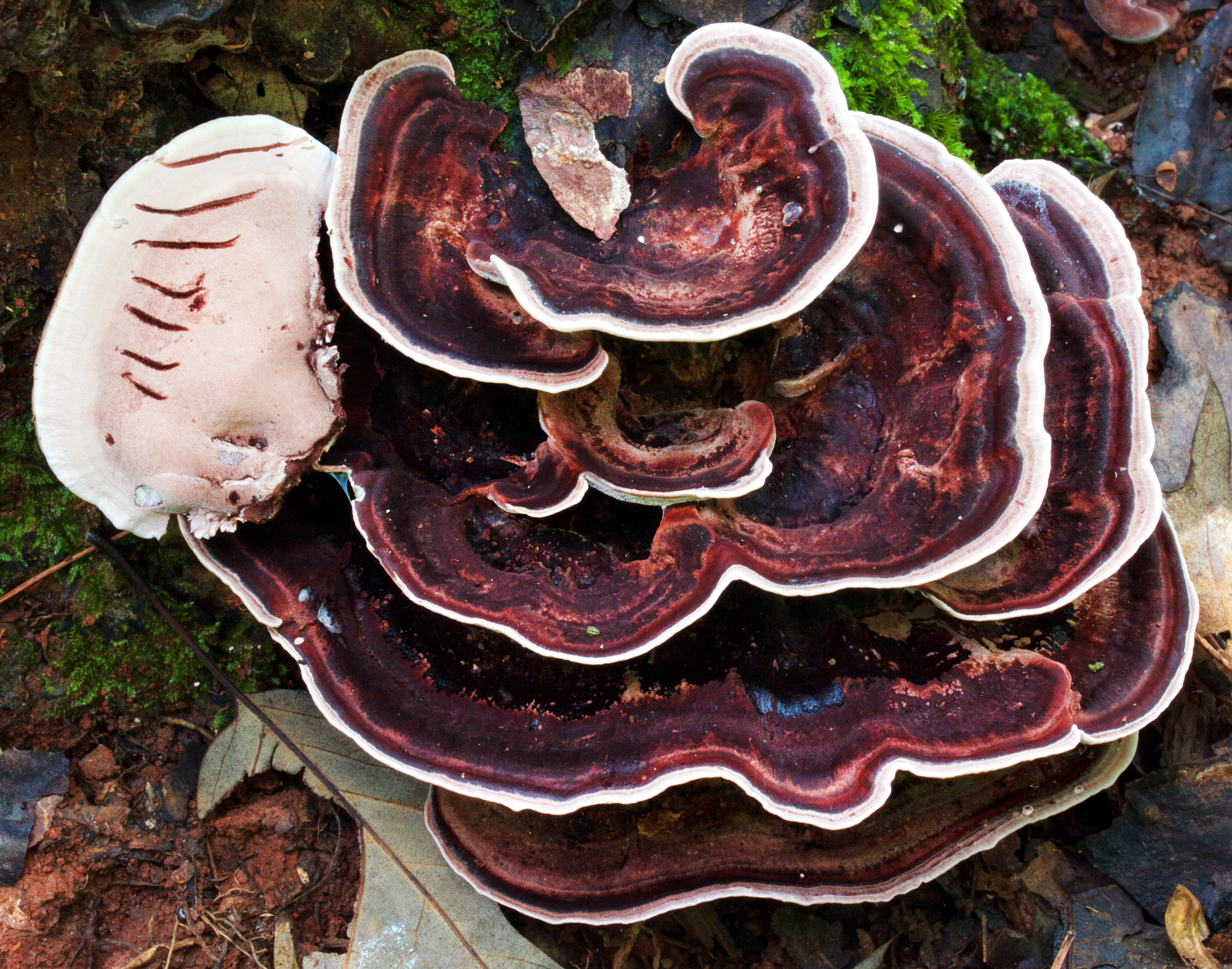|
Junghuhnia Luteoalba
''Butyrea luteoalba'' is a species of fungus belonging to the family Steccherinaceae. It has cosmopolitan distribution In biogeography, cosmopolitan distribution is the term for the range of a taxon that extends across all or most of the world in appropriate habitats. Such a taxon, usually a species, is said to exhibit cosmopolitanism or cosmopolitism. The ext .... Synonym: * ''Junghuhnia luteoalba'' (P. Karst.) Ryvarden, 1972 References {{Taxonbar, from=Q105435321 Steccherinaceae ... [...More Info...] [...Related Items...] OR: [Wikipedia] [Google] [Baidu] |
Fungus
A fungus ( : fungi or funguses) is any member of the group of eukaryotic organisms that includes microorganisms such as yeasts and molds, as well as the more familiar mushrooms. These organisms are classified as a kingdom, separately from the other eukaryotic kingdoms, which by one traditional classification include Plantae, Animalia, Protozoa, and Chromista. A characteristic that places fungi in a different kingdom from plants, bacteria, and some protists is chitin in their cell walls. Fungi, like animals, are heterotrophs; they acquire their food by absorbing dissolved molecules, typically by secreting digestive enzymes into their environment. Fungi do not photosynthesize. Growth is their means of mobility, except for spores (a few of which are flagellated), which may travel through the air or water. Fungi are the principal decomposers in ecological systems. These and other differences place fungi in a single group of related organisms, named the ''Eumycota'' (''true f ... [...More Info...] [...Related Items...] OR: [Wikipedia] [Google] [Baidu] |
Steccherinaceae
The Steccherinaceae are a family of about 200 species of fungi in the order Polyporales. It includes crust-like, toothed, and poroid species that cause a white rot in dead wood. Taxonomy The family was circumscribed by Czech mycologist Erast Parmasto in 1968. Parmasto's original concept included species that are today classified in the Agaricales, Hymenochaetales, Polyporales, and Russulales. A large-scale molecular study published in 2012 by Otto Miettinen and colleagues redefined the limits of the Steccherinaceae to include most species of the poroid and hydnoid genera '' Antrodiella'', '' Junghuhnia'', and ''Steccherinum'', as well as members of 12 other hydnoid and poroid genera. These genera were traditionally classified in the families Phanerochaetaceae, Polyporaceae, and Meruliaceae. They commented: "we see the need for at least 30 monophyletic, morphologically distinguishable genera. These include no fewer than 15 new genera for both polypores and hydnoid fungi, and r ... [...More Info...] [...Related Items...] OR: [Wikipedia] [Google] [Baidu] |
Cosmopolitan Distribution
In biogeography, cosmopolitan distribution is the term for the range of a taxon that extends across all or most of the world in appropriate habitats. Such a taxon, usually a species, is said to exhibit cosmopolitanism or cosmopolitism. The extreme opposite of a cosmopolitan species is an endemic one, being found only in a single geographical location. Qualification The caveat “in appropriate habitat” is used to qualify the term "cosmopolitan distribution", excluding in most instances polar regions, extreme altitudes, oceans, deserts, or small, isolated islands. For example, the housefly is highly cosmopolitan, yet is neither oceanic nor polar in its distribution. Related terms and concepts The term pandemism also is in use, but not all authors are consistent in the sense in which they use the term; some speak of pandemism mainly in referring to diseases and pandemics, and some as a term intermediate between endemism and cosmopolitanism, in effect regarding pandemism as ... [...More Info...] [...Related Items...] OR: [Wikipedia] [Google] [Baidu] |

